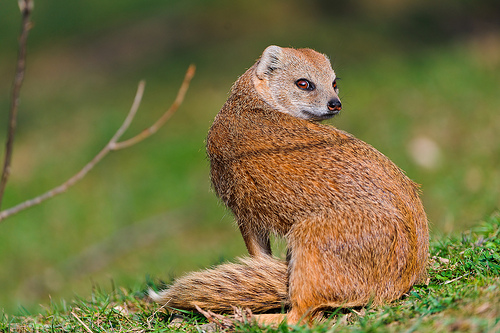Watch the sneaky mongoose.
- Mongooses are a family of mammals with the scientific name Herpestidae, and they are native to Asian, African and some European habitats.
- The family of mongooses consists of just over 30 species, most of which are called such, although the species also include meerkats and kusimanses.
- ‘Mongoose’ comes from the word ‘mungūs’, from the Indian Marathi language, and ‘mungoose’ is an alternative spelling for the word.
- Mongooses, depending on the species, typically grow to heights of 18 to 120 centimetres (7 to 47 inches), and weigh 0.3 to 5 kilograms (0.7 to 11 pounds).
- The diet of a mongoose consists primarily of lizards, insects, snakes, small mammals like rodents, eggs, birds and worms, and at times, nuts and fruit.
Mongoose
Image courtesy of Tambako The Jaguar/Flickr
- Some species of female mongoose give birth to their pups all at the same time, and this decreases the likelihood of infanticide.
- Mongooses can be kept as pets, although it is illegal in many countries where they could become a pest and cause environmental damage, and reduce numbers of native animals.
- Some species of mongoose live in burrows that have been deserted or they have made, and they either live by themselves, or in groups, depending on the species.
- The fur of a mongoose is typically coloured a combination of brown, tan and grey, and the animal has a long tail.
- Mongooses are preyed on by snakes, large birds and jackals, and live to be around 10 to 15 years.
Bibliography:
Mongoose, 2013, A-Z Animals, http://a-z-animals.com/animals/mongoose/
Mongoose, 2015, National Geographic, http://animals.nationalgeographic.com.au/animals/mammals/mongoose/
Mongoose, 2015, Wikipedia, http://en.wikipedia.org/wiki/Mongoose







